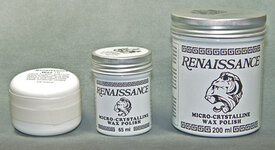Pen&FishingCT
Member
i finished the pen,micromesh,boiled L/O then CA glue,i put the first coat of this, but after i buff it,the finish its not even,i've done it in several speeds and the same results.. the wood takes a good amount of wax but some parts doesn't. so its pretty much like if the pen is peeling off.
what am i doing wrong? who got a better way to use it.ideas please.:crying:
what am i doing wrong? who got a better way to use it.ideas please.:crying:

